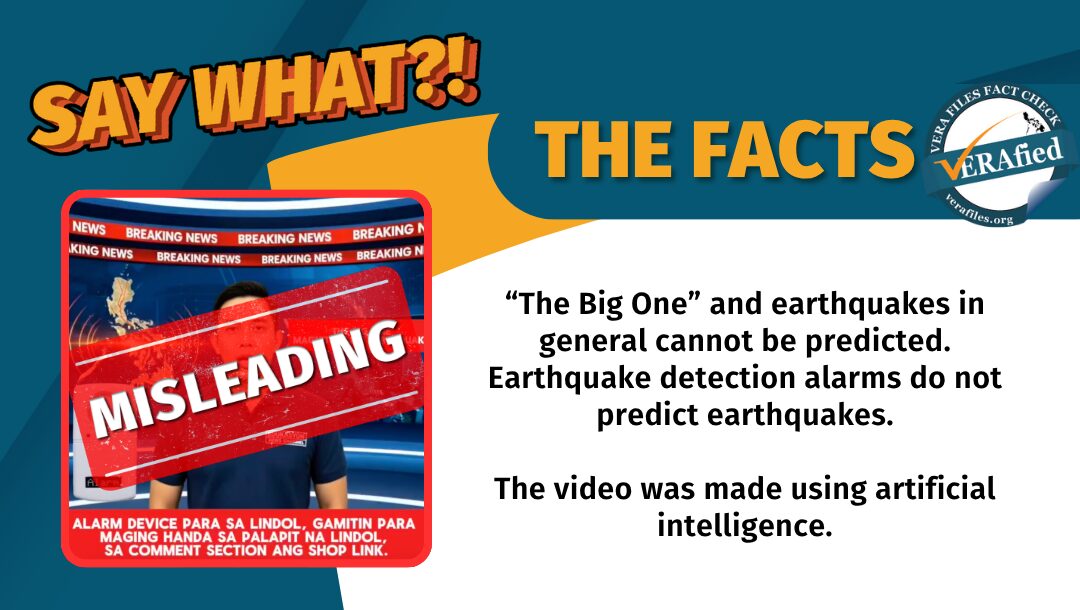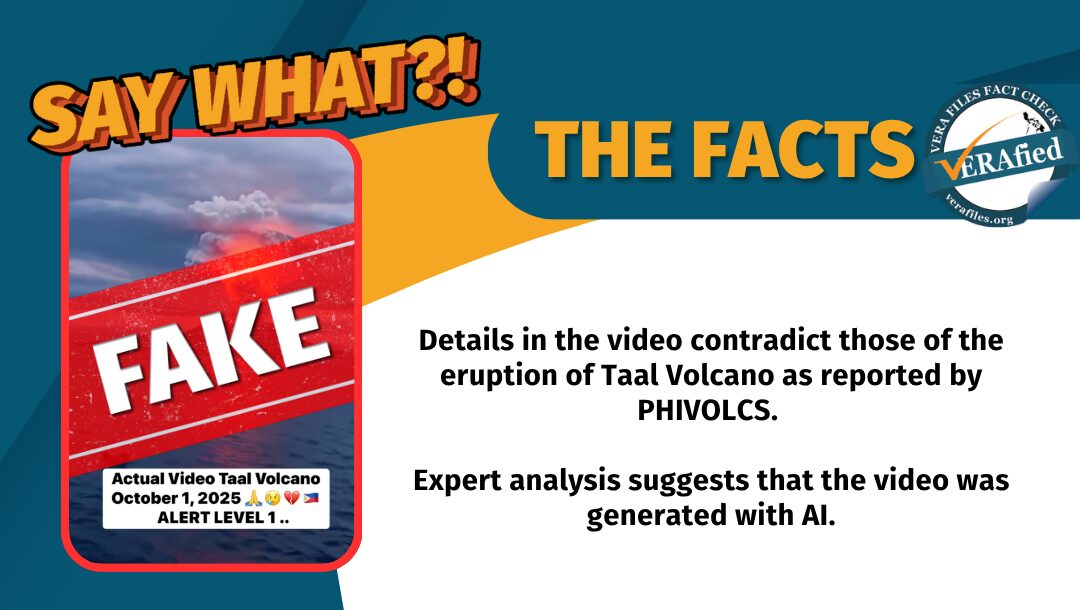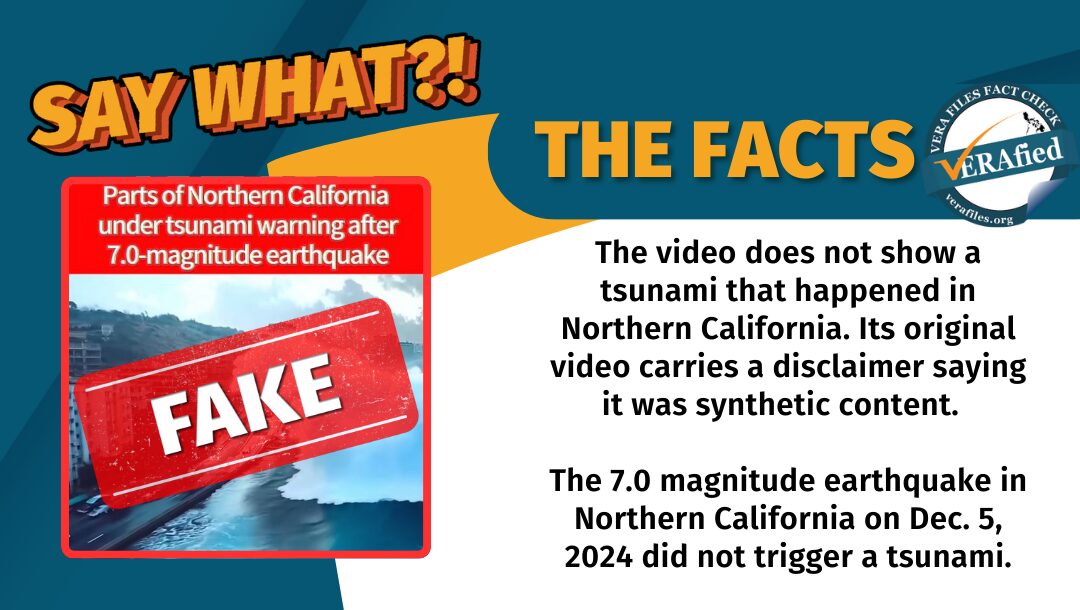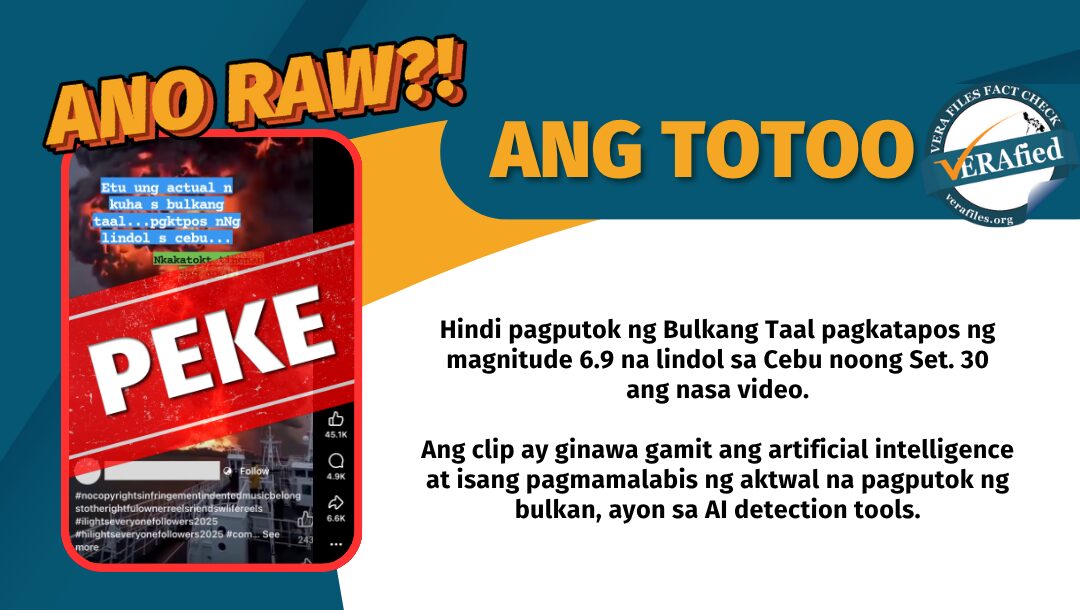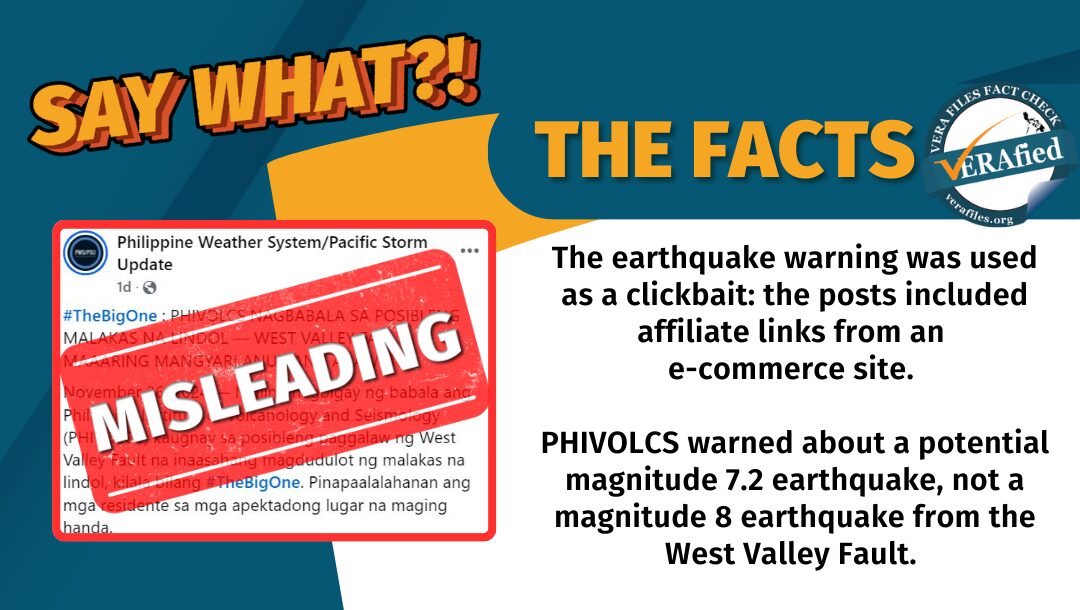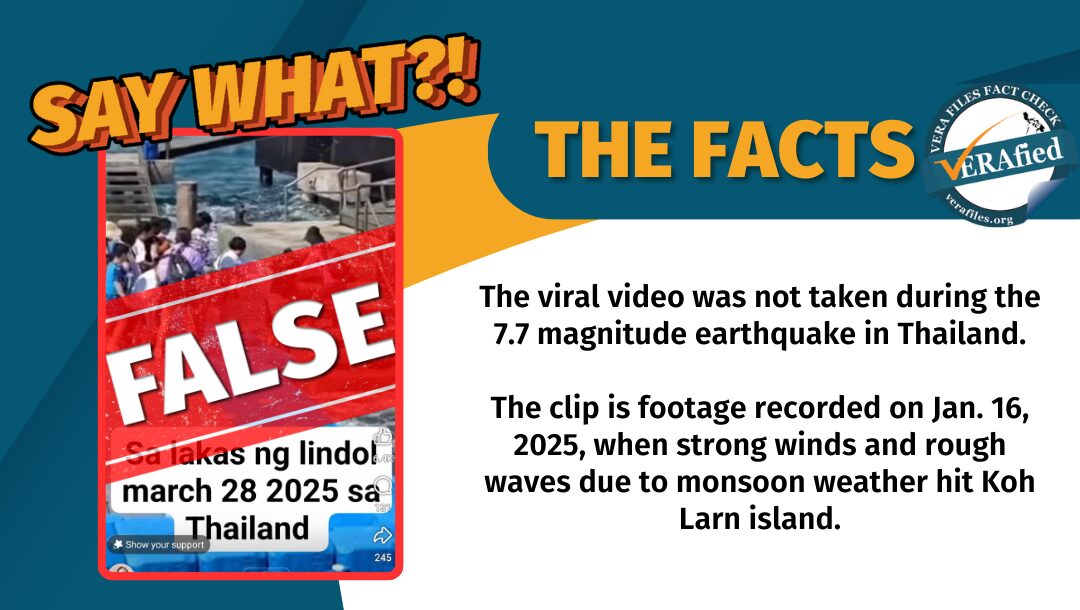A Facebook page is spreading videos that falsely claim an 8.4 magnitude earthquake called “The Big One” will hit Luzon. The clips were generated using artificial intelligence.
The page Edukasyon News Channel uploaded one such video on Oct. 7. It showed a male reporter saying:
“The Big One o malakas na lindol na pwedeng tumama sa buong Pilipinas na may magnitude na 8.4 ay pinaghahandaan na. Good news, pwede nang ma-detect ang parating na lindol sa inyong tahanan sa pamamagitan ng alarm. Makikita ang impormasyon kung paano dito sa post namin at comments section. I-share mo ang balitang ito.”
(The Big One, a strong earthquake that can impact the whole Philippines with a magnitude of 8.4, is now being anticipated. Good news, you can detect the upcoming earthquake through an alarm. You can find out how here in our post and in the comments section. Share this news.)
The video was created with artificial intelligence. Earthquakes cannot be predicted. Detection systems only monitor seismic activity and do not forecast quakes, making them unreliable as warnings.
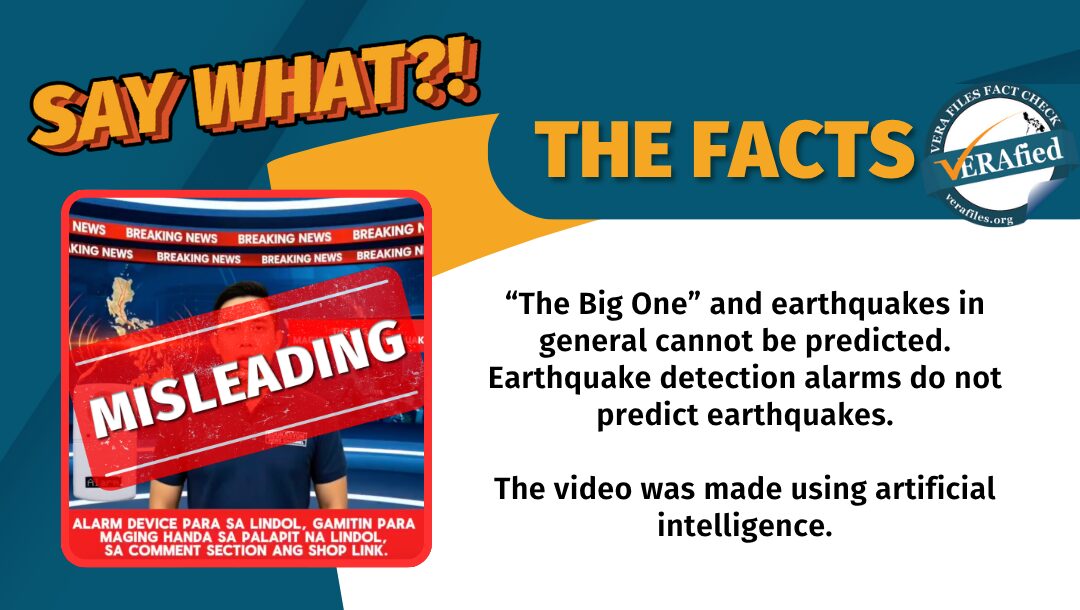
‘The Big One’ unpredictable; earthquake alarms vary
The exact date, time, location and magnitude of an earthquake cannot be predicted, the Philippine Institute of Volcanology and Seismology reiterated in an email to VERA Files Fact Check.
“Wala pong teknolohiya o scientific method ngayon na kayang magsabi nang ganoon ka-precise (No technology or scientific method currently exists that can predict [earthquakes] that precisely),” wrote Winchelle Ian Sevilla, head of PHIVOLCS’ Seismological Observation and Earthquake Prediction division.
“The Big One” refers to a major earthquake that could cause significant loss and damage. Sevilla said that such an earthquake can take place anywhere since there are many large, active faults across the country.
“Really big earthquakes happen very infrequently (some have hundreds or even thousands of years in between them), making it difficult to determine patterns in timing. Each fault has their own potential earthquake magnitude and timing of releasing the tectonic stress,” said University of the Philippines geology professor John Dale Dianala in an email to VERA Files Fact Check.
For Metro Manila, “The Big One” may arise from the rupture of the West Valley Fault which runs from Bulacan to Cavite. It could reach a magnitude of 7 or higher based on the length of the WVF.
“The length of a fault allows geologists to provide a potential earthquake magnitude, as stronger earthquakes involve longer fault ruptures,” said Dianala, who heads the UP Earthquake Geodesy and Geology Lab.
The experts warned that earthquake detection alarms do not predict earthquakes and only alert once shaking has begun.
“Ang ganitong alarm, kaya lang mag-detect ng vibration habang nangyayari na [ang lindol], ibig sabihin, real time shaking lang, hindi prediction (Alarms like these can only detect vibration while [an earthquake] is ongoing, which means, real time shaking, not prediction),” said Sevilla.
Dianala also pointed out that some alarms risk picking up movements from other household items. “That device probably just detects any kind of physical disturbance, and is not able to differentiate an earthquake from shaking from any other source,” he said.
Tell-tale signs of AI content
VERA Files Fact Check observed illegible text, blurred spots in the video and discrepancies in the audio track. These are some indicators that the video was made with AI.
The video was tested using three different AI detector tools, which all rated the content as AI-generated. Hive Moderation gave a 99.3% confidence rating that the video and audio contained AI. WasItAI gave a high confidence rating that the content was made or manipulated with AI. IsItAI gave a 99% confidence rating that the video was AI-generated.

The post circulated in the aftermath of a magnitude 6.9 earthquake that struck Cebu. It registered an intensity level of VII in Cebu City and parts of Leyte, resulting in at least 72 deaths.
Edukasyon News Channel’s post has garnered over 22,000 reactions, 1,300 comments and 1.3 million views. The page has 2.3 million followers and was created on Sept. 7 under the name Malasakit News Update.
